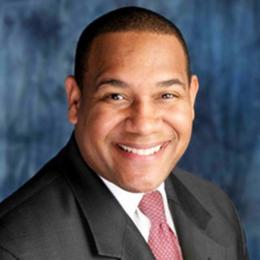As the premier global in-house bar association, ACC leads the charge on addressing issues of great importance to the legal profession. Issues like attorney-client privilege and corporate governance are just a couple of areas in which we strive to lead — providing resources, educational events and networking opportunities to address the always evolving needs of in-house counsel. Of course, without our diverse membership, those resources, events and networking opportunities wouldn’t be nearly as valuable. You know what also loses value without the inclusion of a diverse “membership”? The legal profession.
Promoting diversity and inclusiveness within ACC and the in-house community as a whole is a core operating value of the association. During my time as chair, ACC has continued to strengthen its commitment to members and the next generation of in-house counsel in this area. We’ve also continued to focus on international growth, and expanded our educational programming to include a broader array of global perspectives and locations. In addition, we’ve leveraged new technology and focused research in order to address the shifting demographics and emerging leaders within the profession.
Our membership is diverse and our reach is increasingly global. We even give out awards celebrating diversity: the Matthew J. Whitehead, II Diversity Award was awarded to Eric C. de los Santos of TrueBlue, Inc. and the legal department of Toyota Legal One at the Annual Meeting last month. Celebrating the life and legacy of a CLO and former ACC board member who made diversity a core value of ACC membership, the award recognizes outstanding achievement by a corporate counsel or legal department in creating a program or initiative that increases awareness of, and commitment to, corporate legal diversity. We have fostered relationships with organizations like the National Bar Association, the LGBT Bar Association and the Council On Legal Education Opportunity (CLEO), and supported a pipeline program with Street Law, which targets diverse high school students and offers them positive contact with corporate lawyers.
I’m proud of what ACC has done in the area of diversity, especially as it relates to diversity on a global scale. However, the legal profession itself needs to do a better job in supporting and promoting diverse lawyers in the United States, where I work as in-house counsel.
If you look at the total number of attorneys in the United States, and of that total, the number of minority attorneys in the profession, and then more pointedly, the amount working in-house, the numbers are neither inclusive nor equal. Understanding the total population and other statistical measurements that I could employ here would take another two pages or so (I discuss those stats in further detail in my article “Lift Every Voice” in this issue), I do want to acknowledge how far we’ve come in terms of diversifying the legal profession. We’ve certainly had achievement and progress, but success — we have to decide what that looks like. If I were to ask any corporation or organization including my own, ‘What’s your strategy for women?’ ‘What’s your strategy for African American, Hispanic or Asian attorneys?’ What would the answer be? Furthermore, do we need individualized strategies for each group? And finally, what’s the end goal? As we ponder these questions one thing is clear: We need sustainable growth and solutions that stick.
Diversity is a good thing. We can all agree that a diverse team brings about the best ideas and truly benefits the business. Where we may vary in thought, however, involves responsibility. Who is ultimately responsible for getting us, members of the legal profession, to look at our hiring (and promotion) practices differently — to evaluate our own evaluations? I think the answer is we [corporations] lead the diversity charge, but we need to be better leaders, and we have to want to lead in this area.
At the end of the day, we actually watch the law firms. We watch because we told them “go do” — create that diversity program, provide incentives for minority lawyers, or we won’t work with you. However, we can’t stop there. We need to take it a step further and examine the practices we employ within our own legal departments, turning a critical eye to whom we hire and the outside counsel we employ while being completely transparent — then and only then will we truly be leading the diversity and inclusion charge.
When I talk about transparency and leading by example, I’m speaking on the actual makeup of our legal departments. For example, legal departments should, ideally, report the gender, race and cultural identity of those employees, as well as their position within the organization. In order for the firms to listen to us, we need to be able to report that yes, of our 100 lawyers we have a fair representation of the demographics of the country where we work — and we expect you, the firm, to have this representation as well.




